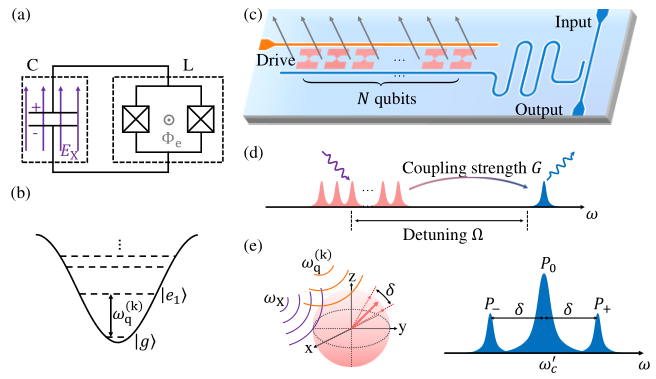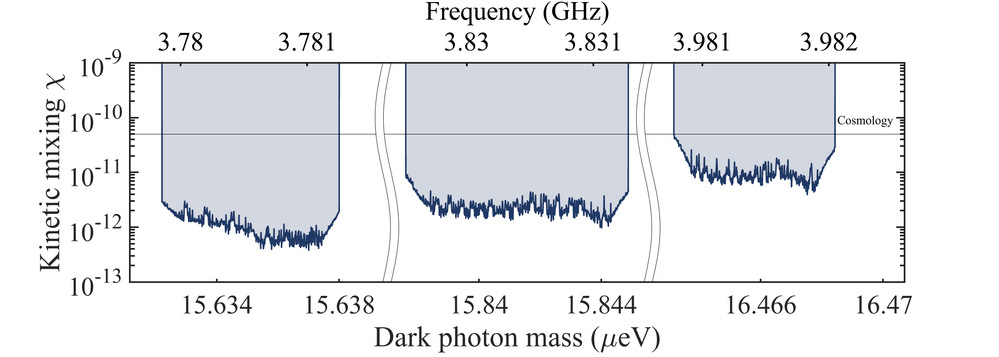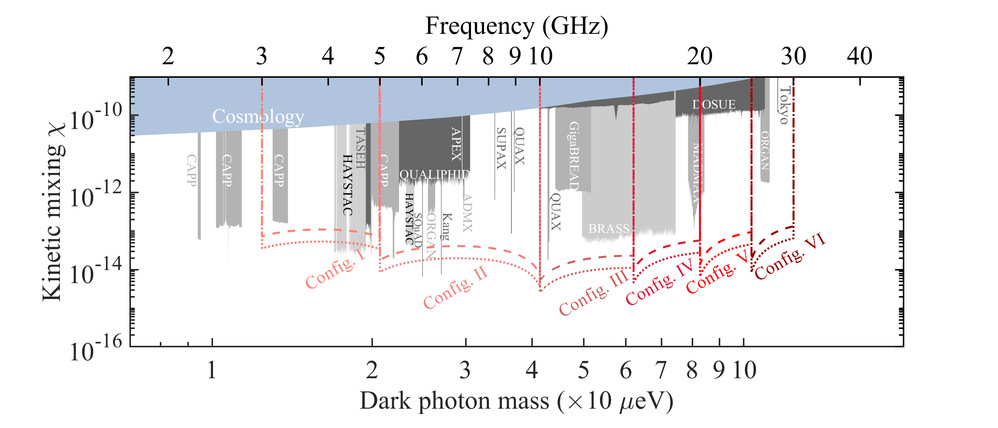Blog
News
NEW PUBLISHED PAPER
Congratulations to Runqi Kang for publishing Scalable Architecture for Dark Photon Searches: Superconducting-Qubit Proof of Principle in Physical Review Letters!
The dark photon is a well-motivated dark matter candidate that appears in many extensions of the standard model. A fundamental mass-range-sensitivity dilemma is always haunting the dark photon search experiments: resonant haloscopes have excellent sensitivity but are narrowband, while nonresonant haloscopes are broadband but not as sensitive as the resonant ones. A scalable architecture integrating numerous resonant haloscopes would be a desirable solution to this dilemma. However, even the concept of a scalable search remains rarely explored due to the size limitation of conventional haloscopes imposed by the dark photon wavelength. Here, we propose and demonstrate a novel architecture using superconducting qubits as subwavelength haloscope units. By virtue of the scalability of superconducting qubits, it is possible to integrate multiplequbitswithdifferent frequenciesona chip-scale device. Furthermore, the frequencies of the qubits can be tuned to extend the search mass range. Thus, our scalable architectures allow for sweepable high-sensitivity dark photon searches at multiple frequencies simultaneously. As a proof-of-principle experiment, we designed and fabricated a three-qubit chip and successfully demonstrated a scalable dark-photon search. Our Letter established constraints on dark photons in the mass range of 15.632–15.638, 15.838–15.845, and 16.463–16.468 μeV, simultaneously, and the constraints are much more stringent than the cosmology constraints. In the future, our Letter can be scaled up to boost the scrutiny of new physics.




